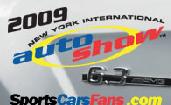Review: 2009 Nissan Cube S

One of our favorite cars last year was a cream-colored, Japanese Domestic Market (JDM), second-generation Nissan Cube that the Japanese automaker loaned us for a few days of commuting and assorted daily driving duties. It was a fantastic car, with excellent styling, the ingenious e-4WD system, a practical interior, and – bless its heart – a front bench seat. Nissan was passing around the keys because it wanted to build up buzz for the arrival of the third-generation Cube, which would break free of the right-hand-drive market prison to which its predecessors were restricted. The JDM Cube was indeed a tasty appetizer, but now the main course has arrived. Once again, we were given the keys to a Nissan Cube for a few days. Only this time it was brown and, more importantly, you can actually buy it in the U.S.
The 2009 Nissan Cube is the third iteration of the nameplate. The previous model is sometimes mistakenly referred to as the "original" car, but it was preceded by the real first-gen Cube, which bowed back in 1998. That Cube wasn't much of a design statement (a pretty generic-looking hatch, really) compared to its successor, and is pretty forgettable unless you're a serious JDM nerd.
One of our primary concerns relating to a left-hand-drive Cube was whether Nissan would really go all the way and deliver market-specific asymmetric bodywork. After all, the asymmetry is the Cube's calling card. You see, doing this would have meant more than simply moving the steering wheel to the opposite side of the dashboard -- you'd need unique sheetmetal, too. Determined to make the Cube a true global vehicle, Nissan delivered the goods. All the signature elements have made the trip across the Pacific, and they're in the spots where they belong. For instance, the blackout panel ahead of the lone visible D-pillar is on the driver's side. An extra window and wraparound-look glass are on the passenger side. The big fridge-door rear hatch is hinged on the driver's side, so that it opens away from the curb. Put a new U.S.-market Nissan Cube next to its JDM counterpart and you'll see that they're mirror images of each other.
Styling-wise, Nissan sought to retain as much of the second-generation car's charm as it could while meeting all of the regulatory requirements in export regions like the United States. In the Cube's case, this concession to the global marketplace manifests itself in the form of more bulbous front and rear bumpers that add some Leno in front and Beyonce out back. The styling is still eye-catching, but the last Nissan Cube was the better looking car – a design classic, even. That said, most North American shoppers aren't car dorks, so they won't even be aware of the previous Cube's existence. Ignorance is bliss, and most people will be captivated with the new Cube's looks. We were stopped with compliments on the car by men and women, young and old alike. "It's neat!" was uttered on more than one occasion.

The 2009 Cube has narrow headlamps that arch up slightly at their inside lower corners where they're bridged by a simple, dark panel with grillework made up of twelve small slats – six on each side of the Nissan badge. A larger intake sits high on the bumper forming the Cube's "mouth."a Finally, there's a lower intake on the front bumper that's flanked by the fog lamps, or in the case of our base Cube S, blacked-out circles where those lamps would go on higher trims. Head-on, the Cube looks anthropomorphized, as if it were to strike up a conversation with neighboring vehicles at any moment.

The sheetmetal around the side glass is beveled, so the windows themselves look recessed. On the driver's side, the blackout panel aft of the passenger-door window features a ripple effect on the plastic – a recurring theme that's reinforced inside and out. Pronounced wheel arches echo the theme established by the softer, rounder bumpers. Out back, the tail-lamp strip echoes the shape of the headlamp/grill combo on the car's nose. The rear end is where the Cube's asymmetry is most evident, with a pillar on the left side only. On the right, the glass just wraps around. It sets the Cube apart from the rest of the (suddenly, increasingly crowded) box-wagon segment. Despite its curvier front and rear bumpers, the rest of the Cube's shape is straightforward, two-box stuff. Oh, and our Cube features a very tasty "Bitter Chocolate" finish. The more brown cars, the merrier!



Climb into the Cube, look up and you'll see the new car's calling card – the ripple-effect. It dominates the headliner and is repeated in the bottoms of the cupholders and on the speaker grilles. We were a little concerned that the roof ripples would come off as gimmicky in person, but they add personality to the econobox interior. Our test car's dark, charcoal-hued cabin is not the one we'd choose for ourselves, however. It comes off as a little dour for a vehicle with such personality. If your tastes run similar to ours, go for the lighter interior – it's more cheery, makes the interior feel even more spacious and, on higher trim levels, can be ordered with a two-tone instrument panel.
That instrument panel is basic and functional with a Jacuzzi-inspired (seriously) wave motif that dovetails with the ripple-effect details mentioned earlier. The "crest" of the wave is in the center where our tester's AM/FM/CD head unit was stationed. The stereo's fine, but one small issue is that the AUX jack for an iPod or other digital music player is a fair distance away from the floor console where you'll rest the device, so expect to have a prominently dangling wire if you use a portable player for tunes.

The Cube S has standard A/C with exceedingly simple controls (the higher-level models get automatic A/C with a different interface). Drivers get simple and easy-to-read primary analog gauges with a digital multifunction display (fuel level, odo, etc.) shoehorned between them. The driver also gets a high-mounted cupholder just to the left of the gauge cluster, which is helpful because the secondary cupholders (arranged in the shape of Mickey Mouse's head) are a long reach away on the floor. Storage up front, however, is basically limited to the glove box, which is a good size, and door pockets. You can leave some stuff in the small console tray between the front seats, and Nissan offers accessory bungee cords that can be used as impromptu door-mounted map pockets in a pinch, but our tester wasn't equipped as such.

You'll notice that we mention a console between the seats. That's because unlike the previous (and current) Japanese-market Cube, the U.S. model is only available with a pair of front seats and not the wonderful front bench we experienced in last summer's JDM tester. Nissan told us this was due to some regulatory issue, which we have no trouble believing. As such, American drivers get a floor shifter, whether it's the CVT or the six-speed manual, the latter of which is what we got to play with. The stick is an easy reach from the cushy, cloth-covered driver's seat, which affords a good view outward. Headroom for all passengers is simply abundant. 42.7 inches in front and 40.2 inches in back. Put in practical terms, those numbers are better than what you'll find in a Tahoe. Rear seat comfort is good, too. The 60/40 split seat-backs recline, and the seat itself also slides fore and aft, allowing for increased legroom or rear cargo space depending on what you need at any given time.

Cargo space behind those seats is recessed (like a minivan, actually), and you can fold down the seat-backs if you need more room than that. Note that they merely fold – no tumbling forward or anything like that for additional room, so it's essentially bi-level storage back there. The non-mechanical cargo space privacy cover included with the tester was very simple to use – attach to the rear seat-backs with Velcro and hook the fixed panel to wall anchors with elastic loops. It does its job perfectly well and removes in seconds if you don't feel like using it.

Power for the Cube comes exclusively from the same 122-hp, 1.8-liter four-cylinder featured in the Nissan Versa. It's an able motivator for the 2,795-pound Cube, especially with the manual gearbox sending power up front (sorry, e-4WD is not available in the U.S.). There's ample juice on tap, so we never felt ourselves wanting more power, either on local roads or the highway. It's pretty easy on gas, too. We averaged north of 29 mpg over four days, with a healthy amount of highway driving built into that. In fact, we exceeded the EPA's 30 mpg highway rating on a weirdly traffic-free St. Patrick's Day commute into NYC, racking up 32 mpg on the round-trip (around 70 miles or so total). The manual's shift action is easy, if a smidge on the notchy side, and the overall driving experience is free of drama.
Don't look for sportiness here – you're barking up the wrong tree. The Nissan Cube moves well with the tools it's got, but it's clearly designed for comfort. Steering effort is super-light and super-assisted, and steering feel is more a theoretical concept than it is an actual sensation. The Cube is easy to maneuver, though, with a nice, tight turning circle. The suspension is dialed in to soak up potholes, not carve corners. Attempt the latter, and its body rolls heavily in protest. On the upside, while you're pounding the pavement in urban environs, the pavement doesn't pound you back nearly as hard.
Ultimately, we left the Cube liking it about as much as we liked the Japanese version last year, which is to say a lot. It's incredibly cool-looking, comfortable to be in and comfortable to drive. It's also reasonably-priced. Our Cube S with no options (power windows, the manual gearbox, four-speaker AM/FM/CD, air conditioning, and 15-inch steelies with plastic covers are all part of the standard package) stickered at $14,675. Taking a lesson from Scion, Nissan will gladly take more of your money should you care to accessorize with stuff like a shag-carpet dash-topper. The Cube goes on sale May 5th against competition from rival boxes like the Scion xB and brand new Kia Soul. Being square, it seems, is cool again.
[Source: Autoblog]















